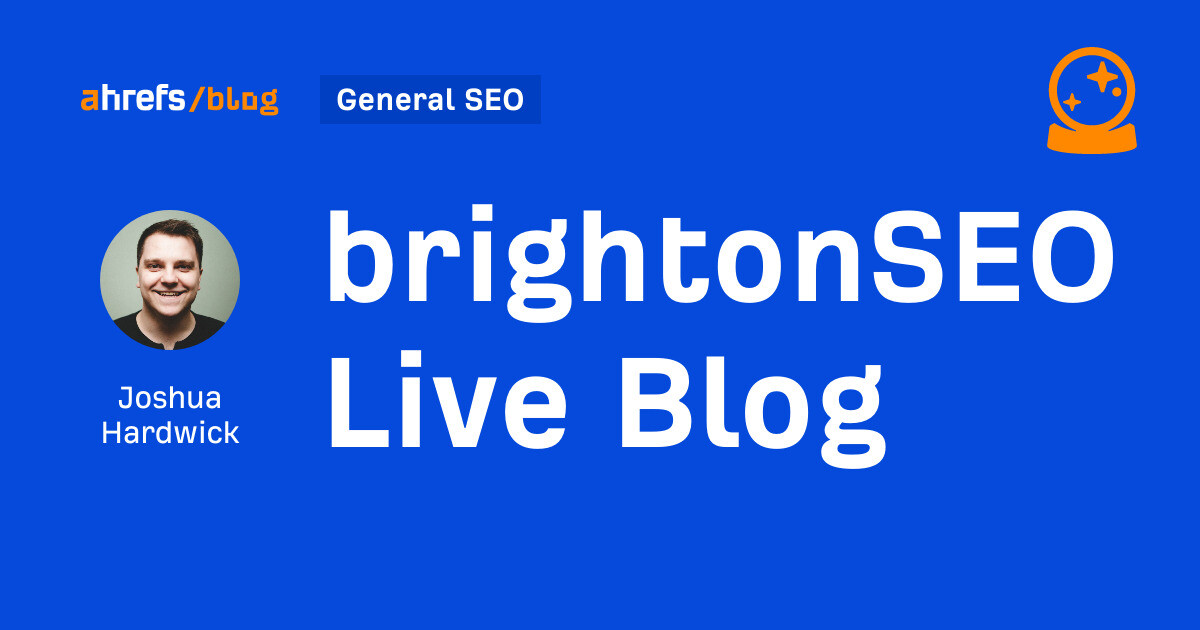SEO
7 Ways To Use Email To Boost Organic Traffic

It’s the bread and butter of your career, but possibly also the bane of your existence.
Calling to targets like a siren’s song, whether they’re in the office down the hall or on a beach vacation across the world, it’s nearly inescapable. And, the modern world couldn’t function without it.
Of course, we’re talking about email marketing.
Typically a softer sell than other types of marketing, it offers incredible ROI, returning on average $36 for every dollar spent.
But, what is it exactly?
According to Wikipedia, email marketing is “the act of sending a commercial message, typically to a group of people, using email.
In its broadest sense, every email sent to a potential or current customer could be considered email marketing. It involves using email to send advertisements, request business, or solicit sales or donations.”
For digital marketers, this means primarily one thing: directing recipients to a website, either for more information, to make a purchase, or to perform some other action.
In other words, traffic is the name of the game.
But, can you really use email marketing to boost your organic traffic? Of course!
A key part of search engine optimization (SEO) is off-page factors, including social media shares and backlinks.
High-quality traffic will also affect how your site is ranked by Google and other search engines.
And, one way to encourage all of these is through effective email marketing.
So, let’s look at the $10,000 question: HOW do you use email marketing to drive traffic?
Here are seven ways you can increase visits to your website:
1. Target With Accuracy
Bounce rate – it’s a dirty word in online marketing.
And while there is such a thing as email bounce rate (that is, emails that were returned by the recipient’s server), what really matters to digital marketers is website bounce rate, i.e., the percentage of visitors who leave your site without taking action.
This is where email marketing can really shine. Whether you’ve bought your list or compiled it on your own, you should be equipped with some basic information about your audience, which will allow you to run highly targeted campaigns.
To improve traffic, your email campaign should go to people who are genuinely interested in your content, whether because they’ve expressed some interest in the past or your content can help solve a current pain point.
These types of visitors are likely to spend a longer time on your website, which signals to search engines that your website is a good resource. Google will recognize your site’s authority and increase your ranking accordingly.
2. Understand User Intent
Why are your email targets opening your messages? Because you’re offering them something of value and they see some relevancy in what you’ve sent them. (Or maybe you just write the world’s best subject lines.)
There are three main types of user intent and email marketing can be used for all of them:
- Navigational – in which a user is trying to get to a certain site, in which case, congratulations, job done.
- Informational – where a user is looking for information.
- Transactional – when a user is prepared to buy or take another online action.
If you’re also running your organization’s SEO, you’re probably familiar with this concept.
If not, get with whoever is and ask them for the long-tail keywords or descriptive searches that are driving people to your site.
Then, use these to craft email messaging that will connect with your audience.
By providing content that addresses user needs, you’re weeding out low-quality visitors, enhancing your SEO via an improvement in quality visits.
3. Use Newsletters With Exclusive Content
Once you know what your target audience is looking for, you can create content to address it.
And, regular newsletters with exclusive content are a great way to keep your brand at the top of a consumer’s mind.
Show your audience your brand’s value and establish a reputation as a thought leader in the field by sending out a weekly or monthly email with relevant information.
If you have a company blog, this is a great source you can mine for content that your audience won’t get anywhere else. And by clicking on the “read more” in your newsletter, they’re doing exactly what you want – visiting your website.
4. Integrate Email And Social Media
On their own, both email and social media marketing are useful tools. But when combined, the effectiveness of both grow exponentially.
Use your social media presence to invite followers to subscribe to your email list and vice versa.
This will not only build rapport, but will also let you develop more personalized communications.
Include “Share” tags in your emails so recipients can cross-promote content.
Incentive-based referrals are another effective marketing tool you can use to engage with customers, e.g., “Follow us on Facebook for 10% off” or “Send this link to a friend for an exclusive ebook.”
Sharing email content like this can drive both searches and traffic to your website.
5. Personalize Your Email Content
Which email message do you think is going to get a better response: One with a generic opening like “Dear customer,” or one that says “Jeff, we have a special deal just for you!” (Assuming your name is Jeff, otherwise that would just be weird).
As a marketer, you probably already know: that personalized emails have better open rates and click-throughs – and that’s just when they use the recipient’s name.
If you really want to maximize the impact of your emails and drive traffic, you need to be taking advantage of segmentation.
By dividing your list into smaller groups based on specific criteria, you can provide relevant content that is more likely to get clicks.
For example, let’s pretend you’re running an email campaign for a computer store that sells both Macs and PCs.
By segmenting your list into those with Macs and those with PCs, you can ensure your content is pertinent to the recipient.
You could do a shotgun approach, but the amount of people interested in both is probably minimal, so you start to run the risk of becoming annoying and driving unsubscribes.
And even if your audience doesn’t open your email, your brand name will still be in the back of their mind, so the next time they do a web search, you’ll be familiar and more likely to receive a click.
6. Conduct A/B Testing With SEO Keywords
We touched on this briefly in number two, but it bears repeating; your email campaigns should be using A/B testing, just like your landing pages and other content.
You should be trying out different versions of emails using SEO keywords to determine which get the best results.
Experiment with placing your brand’s most popular search terms in subject lines, preview text, and body copy.
What’s great about this is that it works in reverse too – finding you’re getting great results with a certain keyword in emails? Try adding it to your SEO terms and it will help drive traffic to your site.
7. Ask For Reviews
Every brand will claim it’s the best in its field. But consumers know this and take it with a grain of salt.
Reviews, on the other hand, have a much larger influence on decisions because they give legitimacy to your marketing claims.
After all, 98% of consumers read reviews. People tend to trust online reviews as much as personal recommendations.
And smart marketers like you know email marketing is a great way to solicit them.
One of the most effective times to send them is post-purchase when the newness of your solution is still fresh in the customer’s mind.
Personalize your emails and include links to review sites to make it easy. Keep your email short, and you’re much more likely to get a response.
If you’re doing email marketing for a local business, asking for reviews is especially helpful. They will not only impact your ranking in local search results, but they also let customers feel like they’re helping someone in their community.
Email Marketing And SEO Go Hand-In-Hand
Your digital marketing channels are all pieces of a much larger campaign.
They’re all connected and by taking a holistic view, you can use them to your advantage and help each perform better.
If you improve the quality of your email marketing, you’ll drive more qualified traffic to your website.
You can also direct targets to specific pages where they’re more likely to have longer visits and engage with your content. This, in turn, increases their likelihood of converting.
Sending your content via emails also earns more shares and attracts more visitors. It encourages other sites to backlink to your content, thereby boosting your credibility.
And all of these working together help make your SEO efforts more effective.
More Resources:
Featured Image: NicoElNino/Shutterstock
SEO
Google Declares It The “Gemini Era” As Revenue Grows 15%

Alphabet Inc., Google’s parent company, announced its first quarter 2024 financial results today.
While Google reported double-digit growth in key revenue areas, the focus was on its AI developments, dubbed the “Gemini era” by CEO Sundar Pichai.
The Numbers: 15% Revenue Growth, Operating Margins Expand
Alphabet reported Q1 revenues of $80.5 billion, a 15% increase year-over-year, exceeding Wall Street’s projections.
Net income was $23.7 billion, with diluted earnings per share of $1.89. Operating margins expanded to 32%, up from 25% in the prior year.
Ruth Porat, Alphabet’s President and CFO, stated:
“Our strong financial results reflect revenue strength across the company and ongoing efforts to durably reengineer our cost base.”
Google’s core advertising units, such as Search and YouTube, drove growth. Google advertising revenues hit $61.7 billion for the quarter.
The Cloud division also maintained momentum, with revenues of $9.6 billion, up 28% year-over-year.
Pichai highlighted that YouTube and Cloud are expected to exit 2024 at a combined $100 billion annual revenue run rate.
Generative AI Integration in Search
Google experimented with AI-powered features in Search Labs before recently introducing AI overviews into the main search results page.
Regarding the gradual rollout, Pichai states:
“We are being measured in how we do this, focusing on areas where gen AI can improve the Search experience, while also prioritizing traffic to websites and merchants.”
Pichai reports that Google’s generative AI features have answered over a billion queries already:
“We’ve already served billions of queries with our generative AI features. It’s enabling people to access new information, to ask questions in new ways, and to ask more complex questions.”
Google reports increased Search usage and user satisfaction among those interacting with the new AI overview results.
The company also highlighted its “Circle to Search” feature on Android, which allows users to circle objects on their screen or in videos to get instant AI-powered answers via Google Lens.
Reorganizing For The “Gemini Era”
As part of the AI roadmap, Alphabet is consolidating all teams building AI models under the Google DeepMind umbrella.
Pichai revealed that, through hardware and software improvements, the company has reduced machine costs associated with its generative AI search results by 80% over the past year.
He states:
“Our data centers are some of the most high-performing, secure, reliable and efficient in the world. We’ve developed new AI models and algorithms that are more than one hundred times more efficient than they were 18 months ago.
How Will Google Make Money With AI?
Alphabet sees opportunities to monetize AI through its advertising products, Cloud offerings, and subscription services.
Google is integrating Gemini into ad products like Performance Max. The company’s Cloud division is bringing “the best of Google AI” to enterprise customers worldwide.
Google One, the company’s subscription service, surpassed 100 million paid subscribers in Q1 and introduced a new premium plan featuring advanced generative AI capabilities powered by Gemini models.
Future Outlook
Pichai outlined six key advantages positioning Alphabet to lead the “next wave of AI innovation”:
- Research leadership in AI breakthroughs like the multimodal Gemini model
- Robust AI infrastructure and custom TPU chips
- Integrating generative AI into Search to enhance the user experience
- A global product footprint reaching billions
- Streamlined teams and improved execution velocity
- Multiple revenue streams to monetize AI through advertising and cloud
With upcoming events like Google I/O and Google Marketing Live, the company is expected to share further updates on its AI initiatives and product roadmap.
Featured Image: Sergei Elagin/Shutterstock
SEO
brightonSEO Live Blog

Hello everyone. It’s April again, so I’m back in Brighton for another two days of Being the introvert I am, my idea of fun isn’t hanging around our booth all day explaining we’ve run out of t-shirts (seriously, you need to be fast if you want swag!). So I decided to do something useful and live-blog the event instead.
Follow below for talk takeaways and (very) mildly humorous commentary. sun, sea, and SEO!
SEO
Google Further Postpones Third-Party Cookie Deprecation In Chrome

Google has again delayed its plan to phase out third-party cookies in the Chrome web browser. The latest postponement comes after ongoing challenges in reconciling feedback from industry stakeholders and regulators.
The announcement was made in Google and the UK’s Competition and Markets Authority (CMA) joint quarterly report on the Privacy Sandbox initiative, scheduled for release on April 26.
Chrome’s Third-Party Cookie Phaseout Pushed To 2025
Google states it “will not complete third-party cookie deprecation during the second half of Q4” this year as planned.
Instead, the tech giant aims to begin deprecating third-party cookies in Chrome “starting early next year,” assuming an agreement can be reached with the CMA and the UK’s Information Commissioner’s Office (ICO).
The statement reads:
“We recognize that there are ongoing challenges related to reconciling divergent feedback from the industry, regulators and developers, and will continue to engage closely with the entire ecosystem. It’s also critical that the CMA has sufficient time to review all evidence, including results from industry tests, which the CMA has asked market participants to provide by the end of June.”
Continued Engagement With Regulators
Google reiterated its commitment to “engaging closely with the CMA and ICO” throughout the process and hopes to conclude discussions this year.
This marks the third delay to Google’s plan to deprecate third-party cookies, initially aiming for a Q3 2023 phaseout before pushing it back to late 2024.
The postponements reflect the challenges in transitioning away from cross-site user tracking while balancing privacy and advertiser interests.
Transition Period & Impact
In January, Chrome began restricting third-party cookie access for 1% of users globally. This percentage was expected to gradually increase until 100% of users were covered by Q3 2024.
However, the latest delay gives websites and services more time to migrate away from third-party cookie dependencies through Google’s limited “deprecation trials” program.
The trials offer temporary cookie access extensions until December 27, 2024, for non-advertising use cases that can demonstrate direct user impact and functional breakage.
While easing the transition, the trials have strict eligibility rules. Advertising-related services are ineligible, and origins matching known ad-related domains are rejected.
Google states the program aims to address functional issues rather than relieve general data collection inconveniences.
Publisher & Advertiser Implications
The repeated delays highlight the potential disruption for digital publishers and advertisers relying on third-party cookie tracking.
Industry groups have raised concerns that restricting cross-site tracking could push websites toward more opaque privacy-invasive practices.
However, privacy advocates view the phaseout as crucial in preventing covert user profiling across the web.
With the latest postponement, all parties have more time to prepare for the eventual loss of third-party cookies and adopt Google’s proposed Privacy Sandbox APIs as replacements.
Featured Image: Novikov Aleksey/Shutterstock
-

 PPC7 days ago
PPC7 days ago19 Best SEO Tools in 2024 (For Every Use Case)
-
SEARCHENGINES6 days ago
Daily Search Forum Recap: April 19, 2024
-
SEARCHENGINES7 days ago
Daily Search Forum Recap: April 18, 2024
-

 WORDPRESS6 days ago
WORDPRESS6 days agoHow to Make $5000 of Passive Income Every Month in WordPress
-

 SEO7 days ago
SEO7 days ago25 WordPress Alternatives Best For SEO
-

 WORDPRESS5 days ago
WORDPRESS5 days ago13 Best HubSpot Alternatives for 2024 (Free + Paid)
-

 WORDPRESS6 days ago
WORDPRESS6 days ago7 Best WooCommerce Points and Rewards Plugins (Free & Paid)
-

 MARKETING6 days ago
MARKETING6 days agoBattling for Attention in the 2024 Election Year Media Frenzy
















You must be logged in to post a comment Login